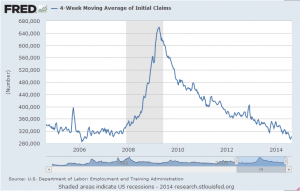Presented by Mark Gallagher
General market news
• Equity markets continued to march higher last week, with the S&P 500 and the Dow Jones Industrial Average both hitting all-time highs.
• Starting last week at 2.40 percent, the yield on the 10-year Treasury dropped as low as 2.32 percent late in the week. After the long weekend, the 10-year yield was back up to 2.38 percent early Tuesday morning. We saw a similar but less drastic move on the long bond, with the 30-year Treasury yield starting last week at 3.16 percent, dropping as low as 3.06 percent late in the week, and bouncing back up to 3.13 percent early Tuesday morning.
• The markets will be anticipating the midweek release of the Federal Reserve’s Beige Book report, which summarizes the economic conditions in each district and sector. Wednesday’s report will be followed by speeches from six Fed officials over the next few days and Ben Bernanke next week, leading up to the September 16 Fed meeting.
• As investors return from summer vacation, we expect volume in the equity markets to pick up in the coming weeks, and investors will begin to focus more narrowly on earnings for both the third and fourth quarters.
Equity Index
Week-to-Date % Month-to-Date % Year-to-Date % 12-Month %
S&P 500
0.80% 4.00% 9.88% 25.23%
Nasdaq Composite
0.94% 4.99% 10.59% 29.22%
DJIA
0.63% 3.60% 4.84% 18.18%
MSCI EAFE
0.56% −0.18% 3.05% 17.16%
MSCI Emerging Markets
0.42% 2.20% 10.65% 20.28%
Russell 2000
1.24% 4.96% 1.75% 17.68%
Source: Bloomberg
Fixed Income Index
Month-to-Date % Year-to-Date % 12-Month %
U.S. Broad Market
−0.02% 5.02% 5.80%
U.S. Treasury
0.01% 4.32% 4.15%
U.S. Mortgages
−0.01% 4.25% 5.26%
Municipal Bond
0.01% 8.20% 11.14%
Source: Bloomberg
What to look forward to
The week will feature data on ISM Manufacturing, which is expected to contract slightly, and Factory Orders, which are expected to increase. We will also see ISM Non-Manufacturing data, which is expected to contract.
The week will end with the August Employment report, with analysts predicting a slight drop in the unemployment rate, from 6.2 percent to 6.1 percent. Gains are anticipated in Nonfarm Payrolls and Average Hourly Earnings.
Disclosures: Certain sections of this commentary contain forward-looking statements that are based on our reasonable expectations, estimates, projections, and assumptions. Forward-looking statements are not guarantees of future performance and involve certain risks and uncertainties, which are difficult to predict. All indices are unmanaged and are not available for direct investment by the public. Past performance is not indicative of future results. The S&P 500 is based on the average performance of the 500 industrial stocks monitored by Standard & Poor’s. The Nasdaq Composite Index measures the performance of all issues listed in the Nasdaq Stock Market, except for rights, warrants, units, and convertible debentures. The Dow Jones Industrial Average is computed by summing the prices of the stocks of 30 large companies and then dividing that total by an adjusted value, one which has been adjusted over the years to account for the effects of stock splits on the prices of the 30 companies. Dividends are reinvested to reflect the actual performance of the underlying securities. The MSCI EAFE Index is a float-adjusted market capitalization index designed to measure developed market equity performance, excluding the U.S. and Canada. The MSCI Emerging Markets Index is a market capitalization-weighted index composed of companies representative of the market structure of 26 emerging market countries in Europe, Latin America, and the Pacific Basin. The Russell 2000® Index measures the performance of the 2,000 smallest companies in the Russell 3000® Index. The Barclays Capital Aggregate Bond Index is an unmanaged market value-weighted performance benchmark for investment-grade fixed-rate debt issues, including government, corporate, asset-backed, and mortgage-backed securities with maturities of at least one year. The U.S. Treasury Index is based on the auctions of U.S. Treasury bills, or on the U.S. Treasury’s daily yield curve. The Barclays Capital Mortgage-Backed Securities (MBS) Index is an unmanaged market value-weighted index of 15- and 30-year fixed-rate securities backed by mortgage pools of the Government National Mortgage Association (GNMA), Federal National Mortgage Association (Fannie Mae), and the Federal Home Loan Mortgage Corporation (FHLMC), and balloon mortgages with fixed-rate coupons. The Barclays Capital Municipal Bond Index includes investment-grade, tax-exempt, and fixed-rate bonds with long-term maturities (greater than 2 years) selected from issues larger than $50 million. The Barclays Capital U.S. Treasury Inflation Protected Securities (TIPS) Index measures the performance of intermediate (1- to 10-year) U.S. TIPS.
###
For IARs: Mark Gallagher is a financial advisor located at Gallagher Financial Services at 2586 East 7th Avenue Suite # 304, North Saint Paul, MN. He offers securities and advisory services as an Investment Adviser Representative of Commonwealth Financial Network®, Member FINRA/SIPC, a Registered Investment Adviser. He can be reached at 651-774-8759 or at mark@markgallagher.com.
Authored by the Investment Research team at Commonwealth Financial Network.
© 2014 Commonwealth Financial Network®
